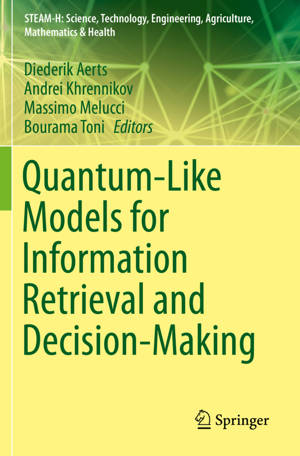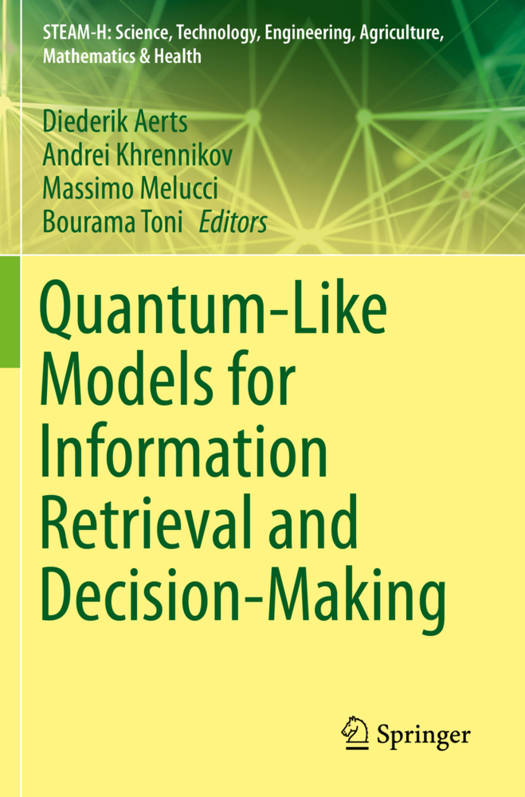
Je cadeautjes zeker op tijd in huis hebben voor de feestdagen? Kom langs in onze winkels en vind het perfecte geschenk!
- Afhalen na 1 uur in een winkel met voorraad
- Gratis thuislevering in België vanaf € 30
- Ruim aanbod met 7 miljoen producten
Je cadeautjes zeker op tijd in huis hebben voor de feestdagen? Kom langs in onze winkels en vind het perfecte geschenk!
- Afhalen na 1 uur in een winkel met voorraad
- Gratis thuislevering in België vanaf € 30
- Ruim aanbod met 7 miljoen producten
Zoeken
Quantum-Like Models for Information Retrieval and Decision-Making
€ 244,45
+ 488 punten
Omschrijving
Recent years have been characterized by tremendous advances in quantum information and communication, both theoretically and experimentally. In addition, mathematical methods of quantum information and quantum probability have begun spreading to other areas of research, beyond physics. One exciting new possibility involves applying these methods to information science and computer science (without direct relation to the problems of creation of quantum computers).
The aim of this Special Volume is to encourage scientists, especially the new generation (master and PhD students), working in computer science and related mathematical fields to explore novel possibilities based on the mathematical formalisms of quantum information and probability. The contributing authors, who hail from various countries, combine extensive quantum methods expertise with real-world experience in application of these methods to computer science. The problems consideredchiefly concern quantum information-probability based modeling in the following areas: information foraging; interactive quantum information access; deep convolutional neural networks; decision making; quantum dynamics; open quantum systems; and theory of contextual probability.
The book offers young scientists (students, PhD, postdocs) an essential introduction to applying the mathematical apparatus of quantum theory to computer science, information retrieval, and information processes.
The aim of this Special Volume is to encourage scientists, especially the new generation (master and PhD students), working in computer science and related mathematical fields to explore novel possibilities based on the mathematical formalisms of quantum information and probability. The contributing authors, who hail from various countries, combine extensive quantum methods expertise with real-world experience in application of these methods to computer science. The problems consideredchiefly concern quantum information-probability based modeling in the following areas: information foraging; interactive quantum information access; deep convolutional neural networks; decision making; quantum dynamics; open quantum systems; and theory of contextual probability.
The book offers young scientists (students, PhD, postdocs) an essential introduction to applying the mathematical apparatus of quantum theory to computer science, information retrieval, and information processes.
Specificaties
Betrokkenen
- Uitgeverij:
Inhoud
- Aantal bladzijden:
- 173
- Taal:
- Engels
- Reeks:
Eigenschappen
- Productcode (EAN):
- 9783030259150
- Verschijningsdatum:
- 20/09/2020
- Uitvoering:
- Paperback
- Formaat:
- Trade paperback (VS)
- Afmetingen:
- 156 mm x 234 mm
- Gewicht:
- 267 g

Alleen bij Standaard Boekhandel
+ 488 punten op je klantenkaart van Standaard Boekhandel
Beoordelingen
We publiceren alleen reviews die voldoen aan de voorwaarden voor reviews. Bekijk onze voorwaarden voor reviews.








